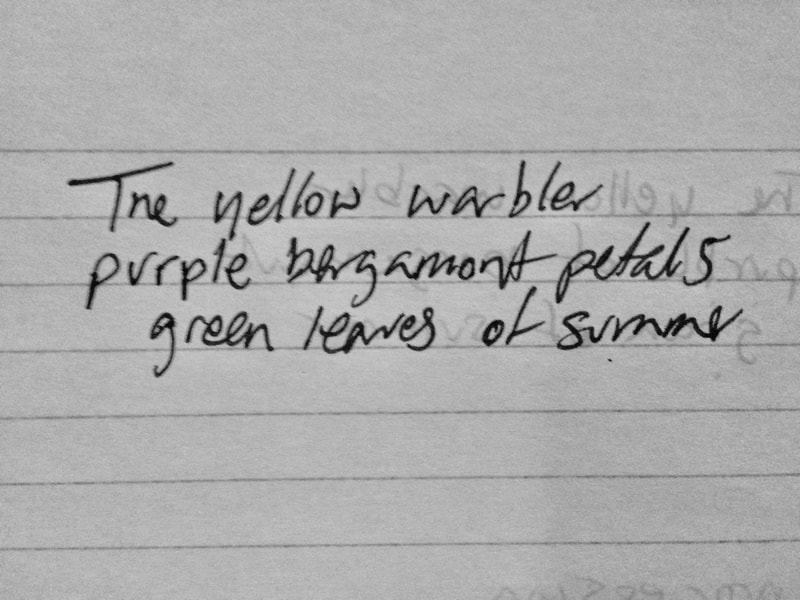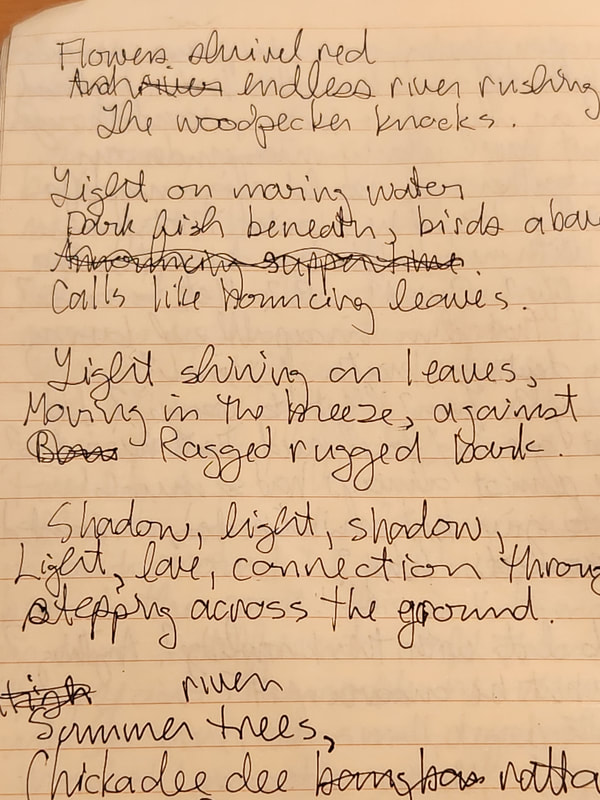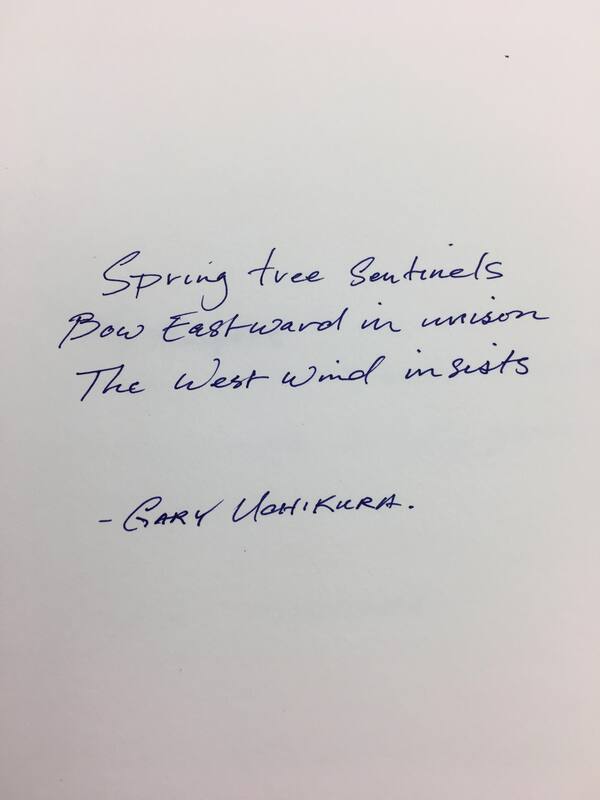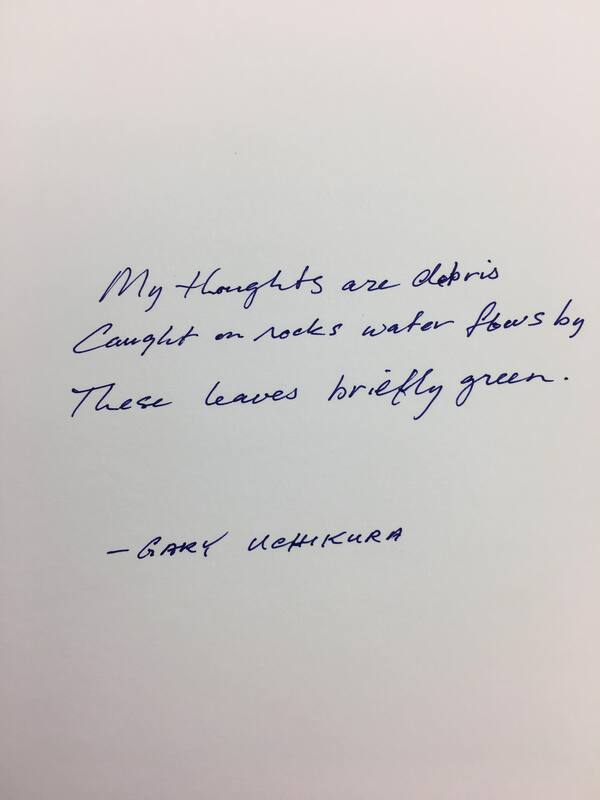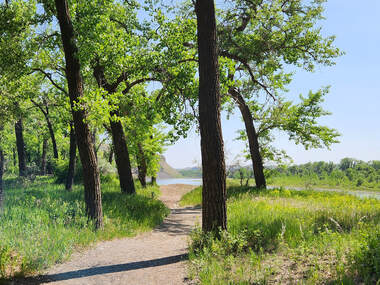
Creating in Awareness: A Haiku Walk
With Sandra Cowan and Annie Martin
This walk is part of the International Walking Arts Encounters “Walking Visions/Visions for Walking,” Prespa, Greece, July 3-9, 2023
In person in Lethbridge, 5-6:30pm, July 5th
Pavan Park (John Martin Recreation Area parking lot)
We are grateful to Andrew Stuck who will be leading the walk in person in Prespa, Greece, 5pm local time, July 5th.
Haiku is a brief, contemplative poetic form that originated in Japan about 600 years ago. Matsuo Basho (1644-1694) is thought to be the person who perfected the form. The main characteristics of haiku are:
You will need a pen or pencil, a notebook, good walking shoes (and whatever else you need to walk in the place and weather where you are located).
You can download the score in pdf here.
Local Lethbridge folks - you are warmly invited to join us in person:
RSVP [email protected]
5:00-6:30pm July 5, 2023
Meet in the parking lot near the John Martin Recreation Area at Pavan Park, Lethbridge, Alberta, Canada
With Sandra Cowan and Annie Martin
This walk is part of the International Walking Arts Encounters “Walking Visions/Visions for Walking,” Prespa, Greece, July 3-9, 2023
In person in Lethbridge, 5-6:30pm, July 5th
Pavan Park (John Martin Recreation Area parking lot)
We are grateful to Andrew Stuck who will be leading the walk in person in Prespa, Greece, 5pm local time, July 5th.
Haiku is a brief, contemplative poetic form that originated in Japan about 600 years ago. Matsuo Basho (1644-1694) is thought to be the person who perfected the form. The main characteristics of haiku are:
- Haiku takes a very specific form. It is a three-line, 17-syllable poem, where the first line is 5 syllables, the second line is 7 syllables, and the third is 5 syllables.
- Traditionally, haiku has been about nature and the seasons. The subject of haiku is often the ordinary and humble, even the overlooked.
- Haiku is an expression of direct sensory experience. Which is to say, it does not use symbolic or metaphorical language, but rather gives the reader a sense of the direct, sensory experience of the writer in simple language.
- An important characteristic of haiku is called the leap or break. This leap is a shift or twist that reflects a shift in point of view, an insight, a juxtaposition, or even a surprise ending. The leap can be very subtle, and it is usually after the second line.
You will need a pen or pencil, a notebook, good walking shoes (and whatever else you need to walk in the place and weather where you are located).
- Find a place to walk that gives you some access to nature.
- Begin with a brief meditation or sense-resting exercise*.
- Open all your sense perceptions, focus on the natural world around you, and walk for 20 or 30 minutes – no phone, no talking, no music, just you yourself quietly moving through the world, noticing.
- Find a place to sit and write. Spend up to 10 minutes free-writing (this can take the form of stream-of-consciousness writing without a pause, or notes, or lists, or perceptions from your walk). Don’t worry about grammar, spelling, structure, and so on – just free your mind and write.
- Compose a haiku based on what you perceived or experienced during the walk.
- Compose as many haiku as you like.
- Feel free to share your haiku on the Lethbridge Walking website by emailing to: [email protected]
* Sense-resting practice (meditation):
To prepare to open our perception fully to the environment around us as we walk it is helpful to rest the senses
- to begin, sit comfortably
- close your eyes and place your fingertips in your ears (or cover them with your palms)
- turn your awareness inward
- notice the sounds in the interior of your body- humming, pulsing, creaking, breathing
- notice any stimuli in your visual field
- notice any other sensations that arise
- feel the warm space of the interior of your body
- rest like this for a minute or two
- open your eyes, rise and begin to walk in silence
You can download the score in pdf here.
Local Lethbridge folks - you are warmly invited to join us in person:
RSVP [email protected]
5:00-6:30pm July 5, 2023
Meet in the parking lot near the John Martin Recreation Area at Pavan Park, Lethbridge, Alberta, Canada
Online Haiku Collection
If you want to share one of the haiku that you wrote for this walk, feel free to send it along (a photo is fine) and we will post it here: [email protected]
If you want to share one of the haiku that you wrote for this walk, feel free to send it along (a photo is fine) and we will post it here: [email protected]
Walking on the land while experiencing it through our senses differs from walking as a means of striving to get somewhere on foot. A contemplative awareness walk is a practice of not-striving, of not-getting-somewhere, of being present and attentive to the place we are in and our interaction with it. The intention of an awareness walk is not to inspire creativity or to document or create anything resulting from it—however, we often find that opening to awareness through walking enlivens the imagination.
This event will bring together contemplative walking and writing practices. We will walk in silence, opening our sense perceptions to the environment around us. Afterwards, there will be an opportunity to connect with and nourish the creativity that an awareness walk can spark. After walking, we will gather with our notebooks to do 10 minutes of intuitive free-writing. Following this exercise, we will each compose several haiku based on opening our senses and connecting with our awareness during the walk. Without thinking about it much, what does our mind create in response to a walk with senses open to the environment? Everyone will be invited to share their haiku if they choose to (in person or online).
This walking and writing practice is available online any time, and in person on July 5, 2023 at 5pm in Lethbridge, Alberta, Canada.
Some Books about Haiku:
The Narrow Road to the Deep North and Other Travel Sketches by Matsuo Basho (first published 1694).
Three Simple Lines: A Writer's Pilgrimage into the Heart and Homeland of Haiku by Natalie Goldberg (2021).
The River of Heaven: The Haiku of Basho, Buson, Issa, and Shiki by Robert Aitken (2011).
Unless otherwise stated, all photos © Sandra Cowan 2023
This event will bring together contemplative walking and writing practices. We will walk in silence, opening our sense perceptions to the environment around us. Afterwards, there will be an opportunity to connect with and nourish the creativity that an awareness walk can spark. After walking, we will gather with our notebooks to do 10 minutes of intuitive free-writing. Following this exercise, we will each compose several haiku based on opening our senses and connecting with our awareness during the walk. Without thinking about it much, what does our mind create in response to a walk with senses open to the environment? Everyone will be invited to share their haiku if they choose to (in person or online).
This walking and writing practice is available online any time, and in person on July 5, 2023 at 5pm in Lethbridge, Alberta, Canada.
Some Books about Haiku:
The Narrow Road to the Deep North and Other Travel Sketches by Matsuo Basho (first published 1694).
Three Simple Lines: A Writer's Pilgrimage into the Heart and Homeland of Haiku by Natalie Goldberg (2021).
The River of Heaven: The Haiku of Basho, Buson, Issa, and Shiki by Robert Aitken (2011).
Unless otherwise stated, all photos © Sandra Cowan 2023
